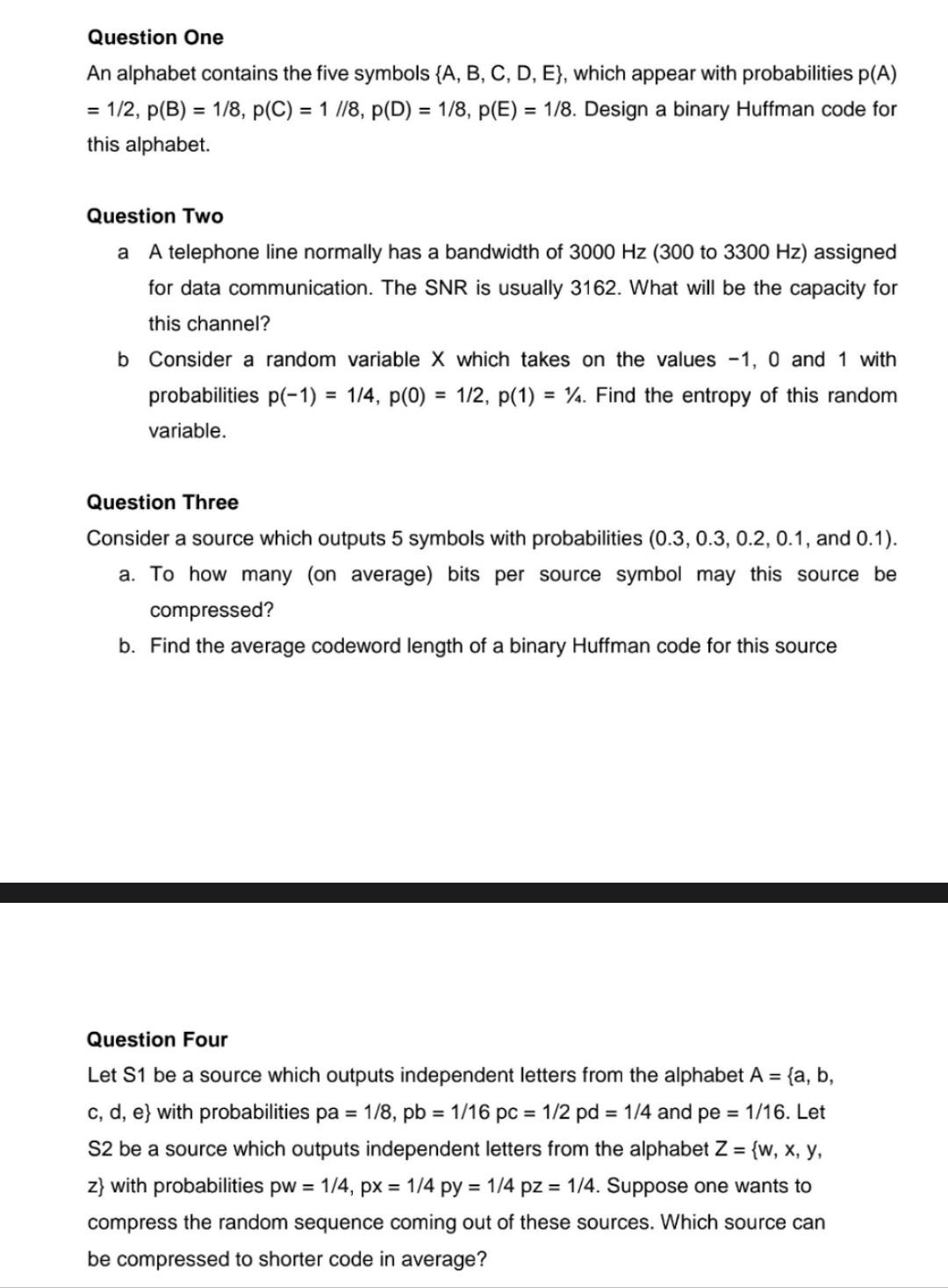Answered step by step
Verified Expert Solution
Question
1 Approved Answer
Question One An alphabet contains the five symbols {A,B,C,D,E}, which appear with probabilities p(A) =1/2,p(B)=1/8,p(C)=1//8,p(D)=1/8,p(E)=1/8. Design a binary Huffman code for this alphabet. Question Two

Question One An alphabet contains the five symbols {A,B,C,D,E}, which appear with probabilities p(A) =1/2,p(B)=1/8,p(C)=1//8,p(D)=1/8,p(E)=1/8. Design a binary Huffman code for this alphabet. Question Two a A telephone line normally has a bandwidth of 3000Hz(300 to 3300Hz ) assigned for data communication. The SNR is usually 3162 . What will be the capacity for this channel? b Consider a random variable X which takes on the values 1,0 and 1 with probabilities p(1)=1/4,p(0)=1/2,p(1)=1/4. Find the entropy of this random variable. Question Three Consider a source which outputs 5 symbols with probabilities (0.3,0.3,0.2,0.1, and 0.1). a. To how many (on average) bits per source symbol may this source be compressed? b. Find the average codeword length of a binary Huffman code for this source Question Four Let S1 be a source which outputs independent letters from the alphabet A={a,b, c,d,e} with probabilities pa=1/8,pb=1/16pc=1/2pd=1/4 and pe=1/16. Let S2 be a source which outputs independent letters from the alphabet Z={w,x,y, z \} with probabilities pw=1/4,px=1/4py=1/4pz=1/4. Suppose one wants to compress the random sequence coming out of these sources. Which source can be compressed to shorter code in average
Step by Step Solution
There are 3 Steps involved in it
Step: 1

Get Instant Access to Expert-Tailored Solutions
See step-by-step solutions with expert insights and AI powered tools for academic success
Step: 2

Step: 3

Ace Your Homework with AI
Get the answers you need in no time with our AI-driven, step-by-step assistance
Get Started


